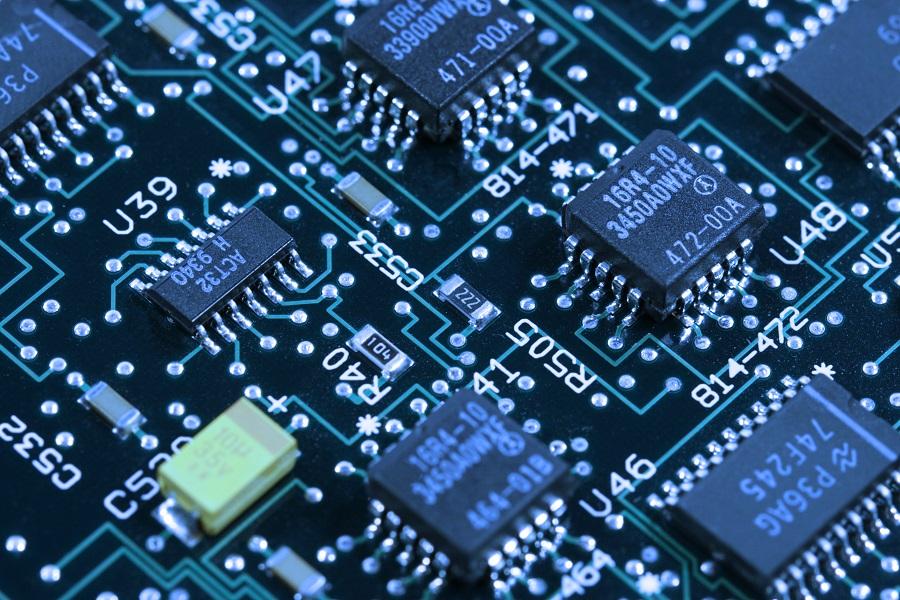The compound semiconductor market is rapidly evolving, driven by advancements in high-performance technologies and growing demand across multiple industries, including telecommunications, automotive, energy, and consumer electronics. To stay ahead in this highly competitive and fast-paced industry, companies must adopt winning strategies that enhance their capabilities, accelerate innovation, and strengthen their position in the global market. This article explores some of the most effective strategies that players in the compound semiconductor market are employing to secure a competitive advantage and maintain long-term growth.
1. Investing in Research and Development
A key strategy for success in the compound semiconductor market is investing heavily in research and development (R&D). As the market continues to evolve, the need for more efficient, cost-effective, and higher-performance semiconductors becomes increasingly important. By dedicating resources to R&D, companies can develop next-generation technologies that meet the growing demands of industries such as electric vehicles (EVs), telecommunications, renewable energy, and consumer electronics.
For instance, ON Semiconductor has focused on developing wide-bandgap semiconductors like silicon carbide (SiC) and gallium nitride (GaN) to meet the increasing demand for energy-efficient power solutions. Similarly, Wolfspeed has invested in expanding its SiC capabilities, recognizing the growing need for high-performance power devices in automotive, renewable energy, and industrial sectors.
By maintaining a strong focus on R&D, companies can stay ahead of technological trends, capitalize on emerging market opportunities, and continue to provide cutting-edge solutions to meet their customers' needs.
2. Strategic Mergers and Acquisitions
Mergers and acquisitions (M&A) are critical strategies for companies looking to strengthen their position in the compound semiconductor market. These strategic moves allow firms to enhance their product portfolios, gain access to new technologies, expand into new markets, and achieve economies of scale.
Infineon Technologies, a leading player in the semiconductor industry, made a significant move in 2020 by acquiring Cypress Semiconductor. This acquisition helped Infineon expand its presence in the automotive sector, particularly in electric vehicles (EVs), by integrating Cypress' technologies into its existing product line. The acquisition also enabled Infineon to gain access to a broader range of power management solutions, enhancing its overall product offering.
Similarly, Macom Technology Solutions has been actively involved in M&A activities to strengthen its position in the compound semiconductor market. The company's acquisition of Applied Micro Circuits Corporation (AMCC) in 2017 helped diversify its portfolio by adding complementary products and technologies in the areas of networking and communications.
Through strategic M&As, companies in the compound semiconductor market can accelerate their growth, enhance their technological capabilities, and gain a competitive edge in an increasingly crowded market.
3. Building Strong Partnerships
Strategic partnerships are another effective way for companies in the compound semiconductor market to gain a competitive advantage. Collaborations with key industry players, such as automotive manufacturers, telecommunications companies, and technology providers, can help businesses enhance their product offerings, accelerate innovation, and expand their market reach.
One notable example of a successful partnership is STMicroelectronics, which has teamed up with leading automotive manufacturers like Tesla and BMW to develop and deploy silicon carbide (SiC)-based power electronics for electric vehicles. This collaboration has allowed STMicroelectronics to leverage its expertise in power semiconductors while gaining access to a large and growing customer base in the EV market.
In addition to automotive partnerships, semiconductor companies are also working closely with telecom giants to support the rollout of 5G networks. Qualcomm, in partnership with Qorvo, is developing GaN and GaAs-based RF components to meet the high-performance demands of 5G base stations, where compound semiconductors are essential for handling high frequencies and power densities.
These partnerships enable companies to share resources, reduce time-to-market for new technologies, and improve their competitive position in key growth markets.
4. Expanding Manufacturing Capabilities
Expanding manufacturing capabilities is another essential strategy for companies in the compound semiconductor market. As demand for high-performance semiconductors continues to grow, companies must invest in increasing their production capacity to meet this demand. Expanding manufacturing facilities not only helps companies stay competitive but also ensures they can scale their operations to accommodate the increasing adoption of compound semiconductors in various industries.
Wolfspeed is investing heavily in expanding its manufacturing capabilities for silicon carbide wafers to meet the rising demand from electric vehicles, renewable energy systems, and industrial applications. The company has announced plans to build a new SiC wafer production facility in the United States, which will help strengthen its position in the rapidly growing power electronics market.
Similarly, GlobalWafers has made significant investments in compound semiconductor wafer production, securing a steady supply of high-quality substrates for semiconductor manufacturers. This focus on expanding manufacturing capabilities ensures that companies can meet the growing demand for compound semiconductors and maintain a competitive edge in the market.
5. Focusing on Sustainability and Environmental Impact
Sustainability has become a key focus for companies across all industries, and the compound semiconductor market is no exception. As demand for clean energy and energy-efficient technologies increases, companies are making strides to reduce their environmental impact and enhance the sustainability of their products.
Siemens, for example, has committed to reducing the carbon footprint of its semiconductor production processes. The company is investing in sustainable manufacturing practices and energy-efficient technologies to minimize the environmental impact of its operations. Additionally, GaN Systems is developing gallium nitride-based power devices that contribute to energy savings in applications ranging from electric vehicles to renewable energy systems.
By prioritizing sustainability, companies not only contribute to environmental conservation but also align themselves with the growing demand for green technologies, which are essential for long-term success in the compound semiconductor market.
Conclusion
Winning strategies in the compound semiconductor market involve a combination of investing in R&D, pursuing strategic mergers and acquisitions, building strong partnerships, expanding manufacturing capabilities, and focusing on sustainability. Companies that adopt these strategies are better positioned to capitalize on the growing demand for high-performance semiconductors across a wide range of industries. By staying ahead of technological trends, addressing customer needs, and fostering innovation, businesses can maintain a competitive edge and drive growth in the dynamic compound semiconductor market.







